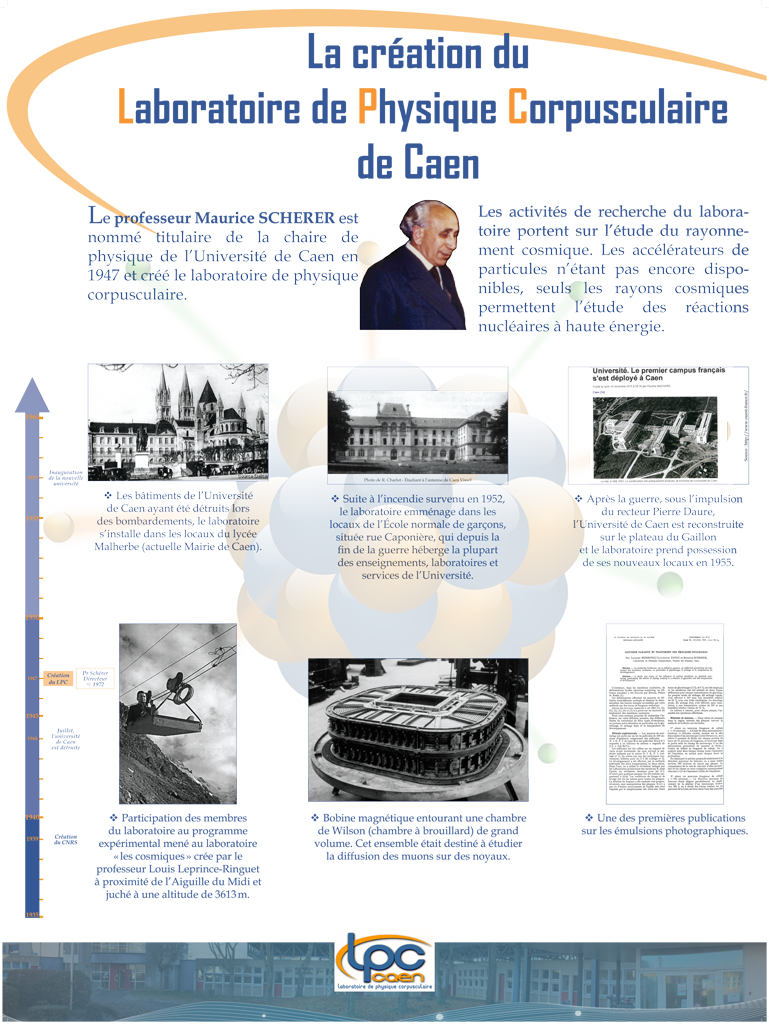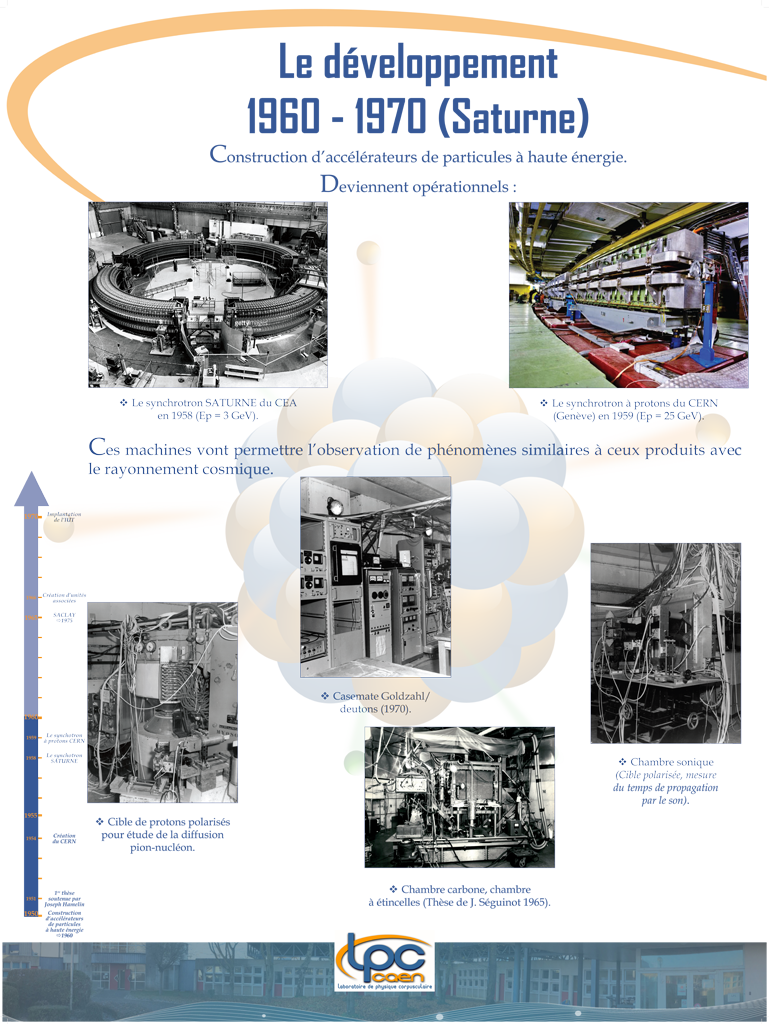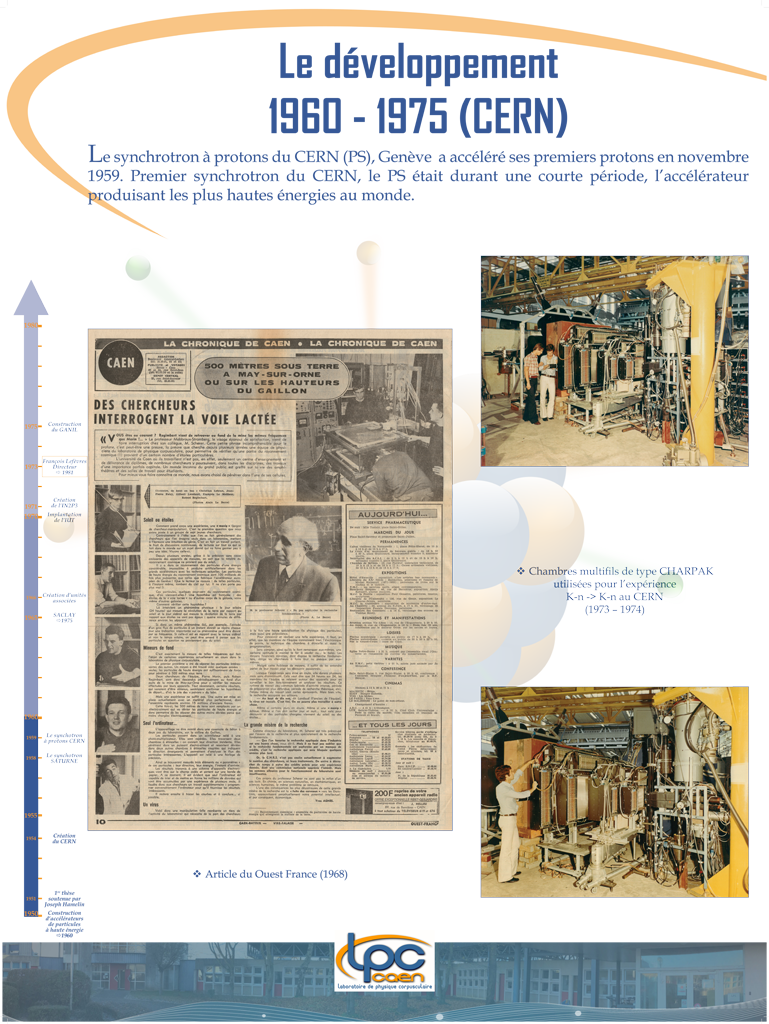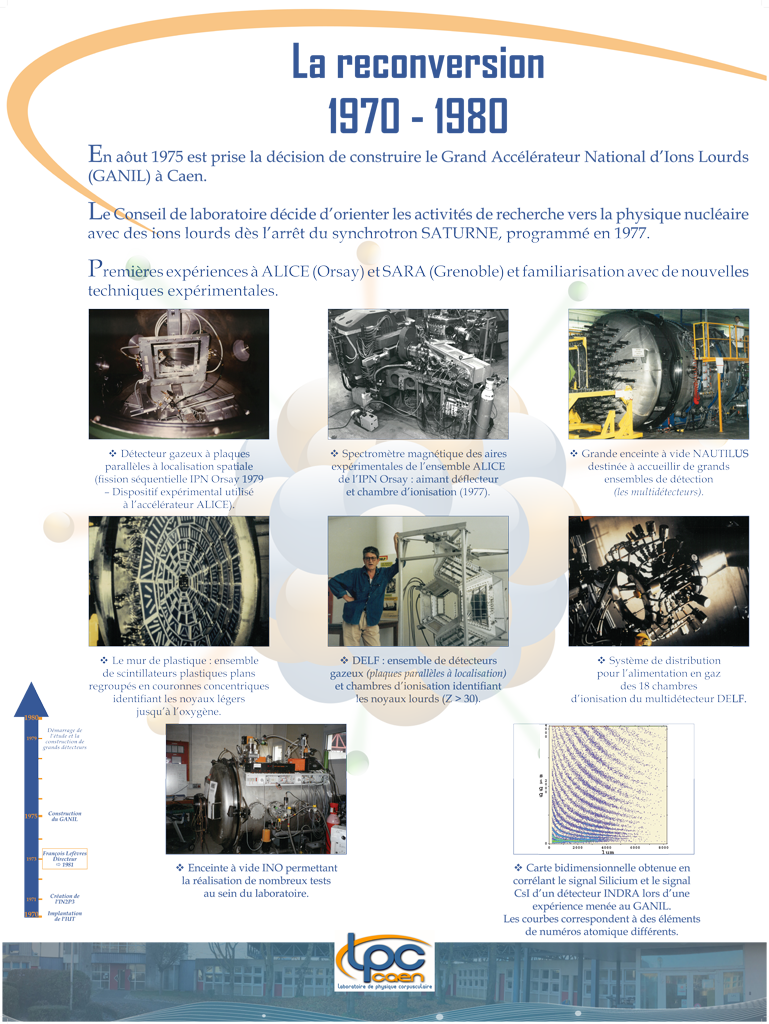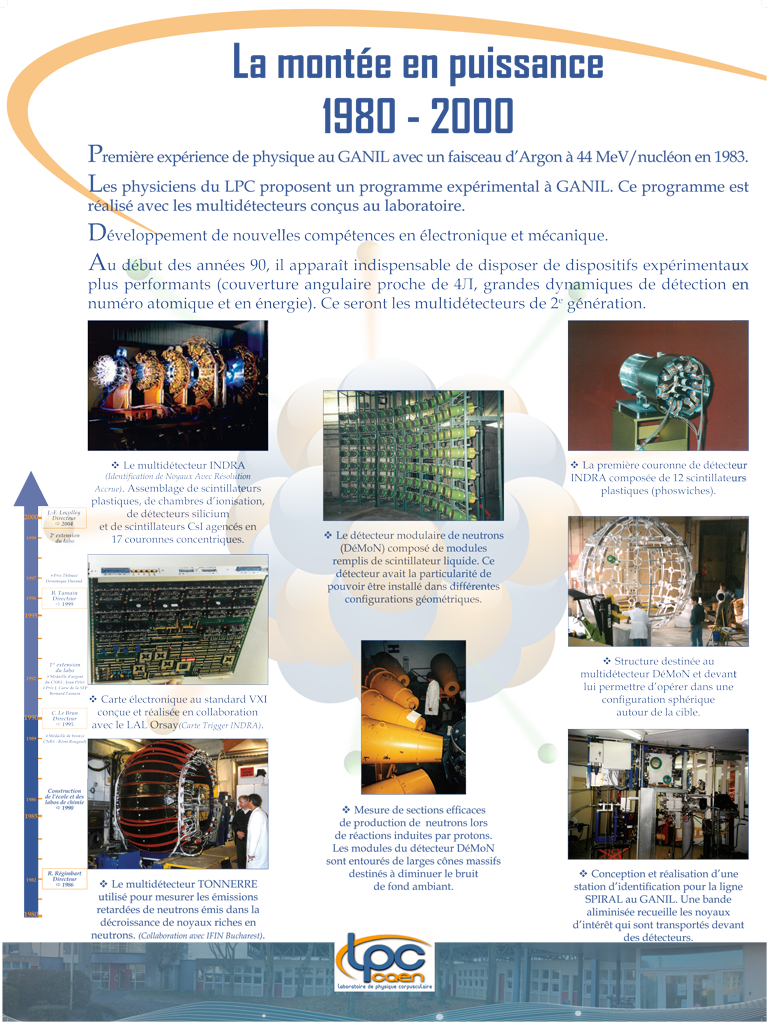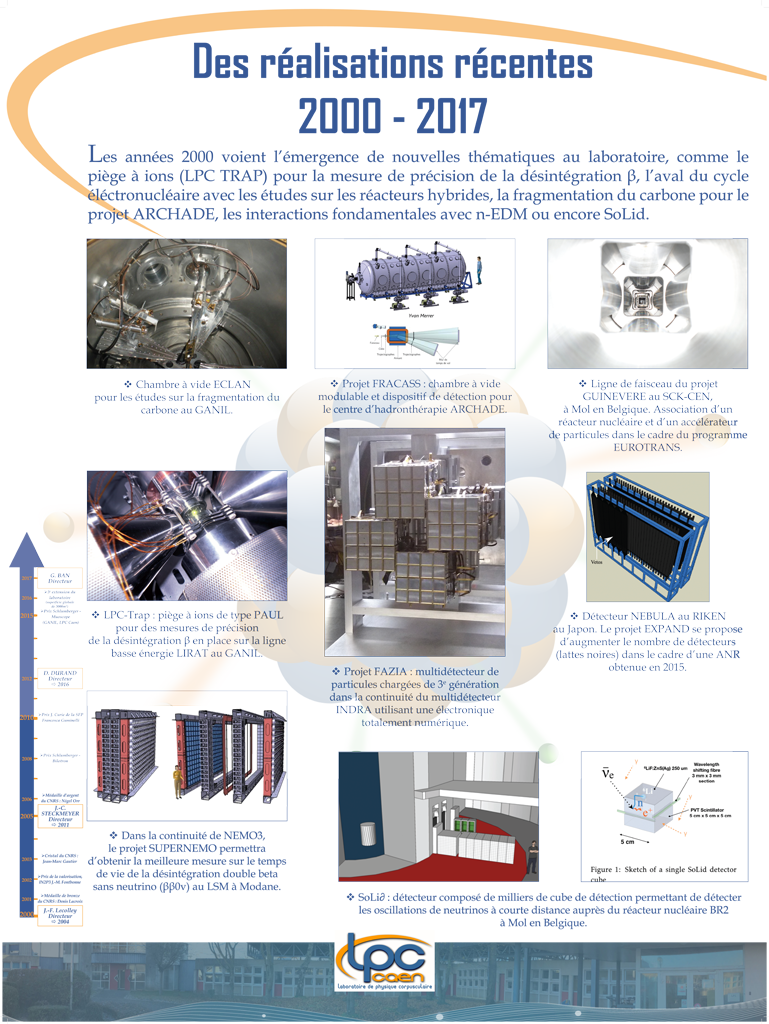OUR HISTORY
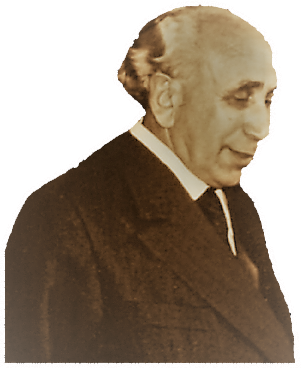
1947
The laboratory came into being in 1947 with the arrival of Professor Scherer, who held the chair of physics at the University of Caen at the time.
The laboratory was located in the premises of the Lycée Malherbe (in the current city hall of Caen), following the destruction of the university, rue Pasteur. The laboratory moved again to rue Caponière because of a fire. In 1953, the first doctoral thesis in corpuscular physics was defended at the University of Caen. In 1957, the Laboratory of Corpuscular Physics joined the newly rebuilt university.
At the research level, the Laboratoire de physique corpusculaire was initially interested in the field of particle physics. Experiments were carried out at the Aiguille du Midi, in the mines of May-sur-Orne, at the Saturn particle gas pedal in Saclay and at the Cern in Geneva.
At the beginning of the 1970s, physicists working on the study of the nucleus found themselves more and more limited in the field of energies. It is thus impossible to validate by experience theoretical concepts that may be erroneous. This community of researchers then decided, with the agreement of the major research organizations, to write a report proposing the creation of a heavy ion gas pedal that would improve knowledge of the nucleus. The year 1975 was a turning point in the scientific life of the LPC. The principle of this construction was taken one morning in the Council of Ministers. In the afternoon, at the instigation of Mr. D’Ornano, President of the General Council of Calvados and Minister of Industry, the decision to build GANIL in Caen was taken. The first beam was delivered in November 1982, and the first experiment took place in January 1983.
Also in 1975, CEA physicists who were members of the Organizing Committee of a Nuclear Physics congress to be held in Caen, proposed that LPC participate in the European Conference on Heavy Ion Physics which took place from September 6 to 10, 1976. This is the first contact of LPC with this theme and with the Physicists of heavy ions.
University laboratory, the LPC becomes in 1966 an “associated unit” CNRS. Then, in 1977 “Associated Laboratory” (LA34) at the time of the creation of the Federative Institutes, the laboratory integrates the Institute of Nuclear Physics and Particle Physics (IN2P3). Since 1986, at the time of its installation on the site of the Institute of Sciences of Matter and Radiation, currently ENSICAEN, the LPC has been attached to this establishment. Our tutelage is then: CNRS, ENSICAEN and the University of Caen.
